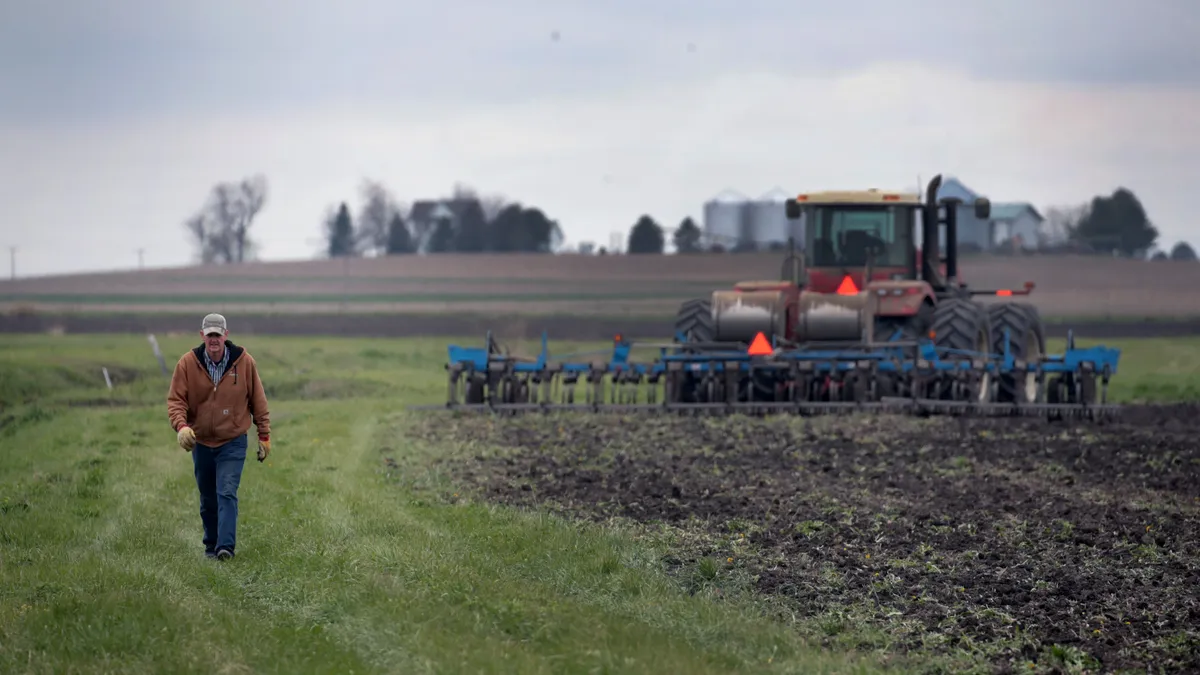Dive Brief:
- Declining crop prices are pressuring farm income as growers warn that middling demand and high production costs are pushing them to a breaking point.
- A report from the Federal Reserve said farmers are moderating their profit expectations as low prices for key crops have producers holding on to their supplies longer.
- “Our working capital is fast being depleted,” Dana Allen-Tulley, farmer and president of the Minnesota Corn Growers Association, said Tuesday urging lawmakers to pass a new farm bill to “head off the economic hemorrhaging.”
Dive Insight:
Net farm income is on track to plummet more than 25%, or $43 billion, the largest single-year decline on record, according to the U.S. Department of Agriculture. The expected drop in income is coming after a 19% decline from 2022 to 2023, underscoring the significant pressures that farmers face across the country.
According to the latest Beige Book, a summary of economic conditions across the 12 Federal Reserve districts, agricultural conditions have been mixed so far this year. Livestock and poultry farmers are capitalizing on lower feed costs amid strong demand, while row crop, fruit and vegetable growers struggle. Ultimately though, lenders expect farm incomes to continue deteriorating.
“I have never known a worse time in my 40 years of farming,” David Dunlow, farmer and chairman of the American Cotton Producers, told the House Agriculture Committee on Tuesday as part of a hearing on farm income. “Some of these expenses have nearly doubled, and my margins have narrowed over the last several years. Things have gotten so bad that these days a bumper crop is required just to break even.”
Corn growers, for example, would have to produce 27% more bushels per acre compared to the past 10-year average just to break even, Allen-Tulley said. For soybeans, farmers would need a 12% increase in yields. The same sentiment is true for wheat, sorghum, peanuts, rice, cotton and other commodities, she said.
“We’re all looking at average losses of more than $150 per acre if crop prices remain at current levels,” Allen-Tulley said.
As farmers struggle with cash flows, lenders also are seeing increased debt levels for agricultural producers.
Without changes to current government policy, bankers believe they may be “looking over a cliff” in regard to the farm economy, said Tony Hotchkiss, chairman of the American Bankers Association’s agricultural and rural bankers committee.
Hotchkiss and others urged lawmakers to move forward with a new bipartisan farm bill that strengthens the farm safety net with enhanced risk management and supplemental disaster and emergency relief funds.
“The bottom line is we need a new Farm Bill this year,” Dunlow said.
Farm groups have made a last-ditch effort to rally Congress to pass a farm bill before current legislation expires Sept. 30. More than 500 organizations called for a new farm bill in a letter last week, though many are bracing for another one-year extension as Congress focuses on elections and prepares to embark on an August recess.











